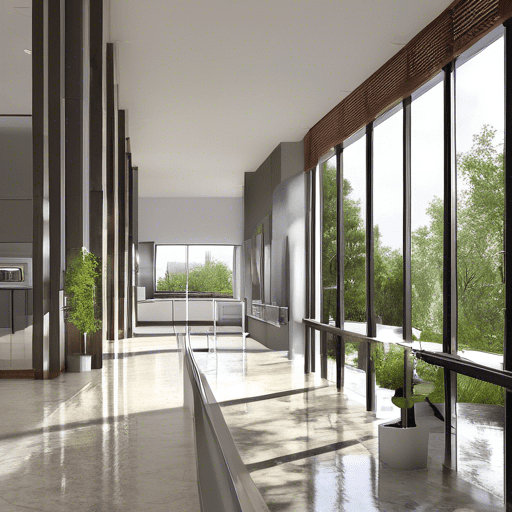Are you ready to join the sustainable building revolution? Green building certification is the key to creating environmentally friendly and

In the fight against climate change, reducing greenhouse gas emissions is paramount. One significant contributor to these emissions is the energy consumption of residential buildings. For MEP (Mechanical, Electrical, and Plumbing) designers, ASHRAE Standard 90.2 is a crucial tool to combat this issue. This standard provides guidance on achieving energy-efficient HVAC (Heating, Ventilation, and Air Conditioning) systems in residential buildings, ultimately helping to reduce greenhouse gas emissions.
Greenhouse gas emissions, primarily carbon dioxide (CO2), result from the burning of fossil fuels for electricity and heating. Residential buildings are responsible for a substantial portion of these emissions, as they consume a considerable amount of energy. The energy used for heating, cooling, and powering appliances can be substantial if not optimized. This is where ASHRAE Standard 90.2 becomes a key player.
ASHRAE, the American Society of Heating, Refrigerating, and Air-Conditioning Engineers, developed Standard 90.2 as a comprehensive guideline for designing energy-efficient HVAC systems in low-rise residential buildings. The standard aims to significantly reduce energy consumption and the associated greenhouse gas emissions.
MEP designers are critical players in achieving the goals set forth by ASHRAE Standard 90.2. These professionals focus on the mechanical, electrical, and plumbing systems of residential buildings. Their responsibilities include designing HVAC systems that are not only functional but also highly energy-efficient.
This standard lays out specific requirements and guidelines that MEP designers must consider when developing HVAC systems for residential buildings. Key features of ASHRAE Standard 90.2 include:
The standard sets minimum efficiency requirements for various HVAC components, such as furnaces, air conditioners, and heat pumps. MEP designers must select equipment that meets or exceeds these requirements.
ASHRAE Standards 90.2 specifies insulation and window requirements for the building envelope to minimize heat transfer. MEP designers need to ensure that the building design complies with these requirements.
To prevent energy loss through ducts, the standard mandates specific insulation and sealing requirements for ductwork. MEP designers must incorporate these measures into their plans.
In addition to prescriptive requirements, the standard offers a performance path. This allows MEP designers to use energy modeling and analysis to demonstrate that a building’s energy performance meets or exceeds the standard’s requirements.
Compliance with ASHRAE Standard 90.2 has several noteworthy benefits:
Achieving energy efficiency as per this standard directly leads to reduced energy consumption and, in turn, decreased greenhouse gas emissions.
Residential buildings designed in compliance with the standard experience lower energy bills, providing financial relief for homeowners.
Highly efficient HVAC systems create a more comfortable indoor environment for residents, regardless of the weather outside.
MEP designers who adhere to ASHRAE Standard 90.2 play a critical role in environmental stewardship, contributing to a cleaner planet.
As a company specializing in MEP engineering, InnoDez is well-equipped to assist residential building projects in meeting ASHRAE Standard 90.2 requirements. Our team of experts understands the importance of reducing greenhouse gas emissions and the role that MEP design plays in achieving this goal.
If you’re embarking on a residential building project and are committed to environmental responsibility, InnoDez is here to support you in achieving compliance with ASHRAE Standards 90.2. By collaborating with our MEP design team, you can ensure that your project aligns with the best practices for reducing greenhouse gas emissions while achieving energy efficiency and sustainability.
Contact InnoDez today to discuss how we can work together to create a more sustainable future by reducing greenhouse gas emissions from residential buildings.
About Author
InnoDez